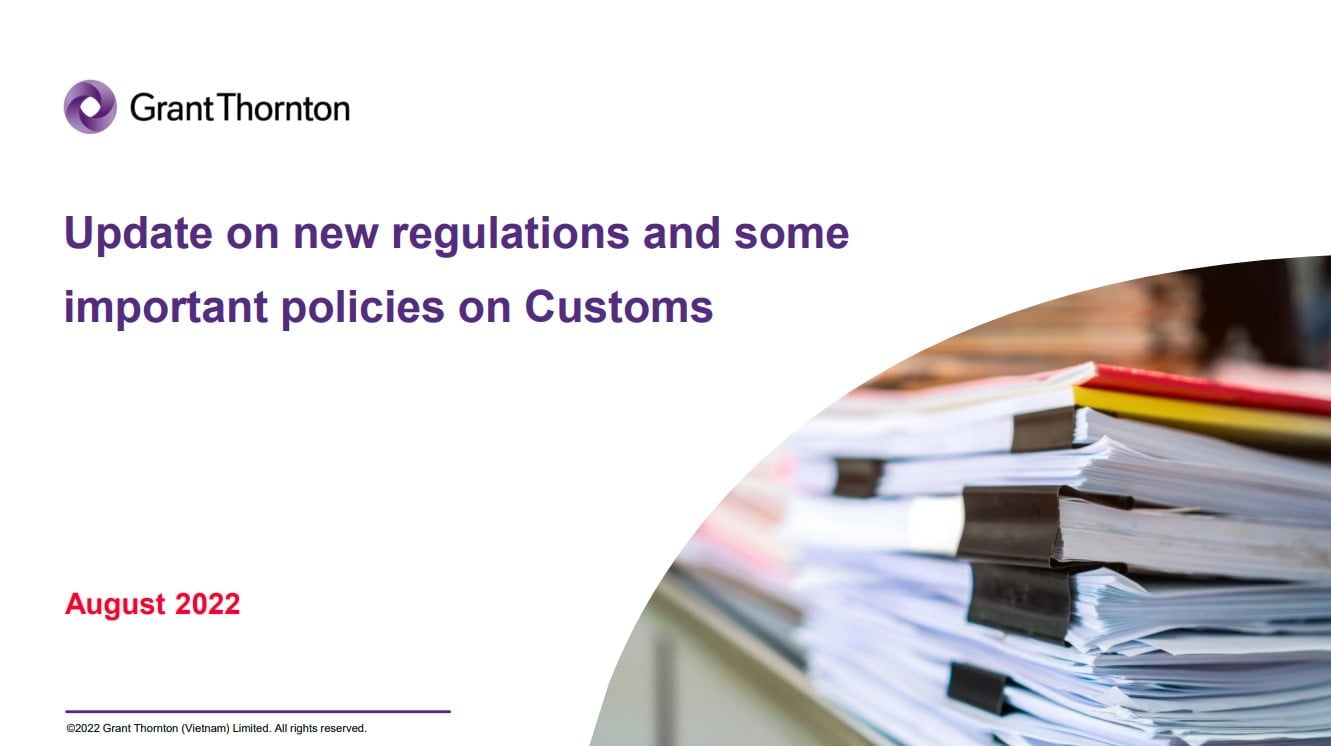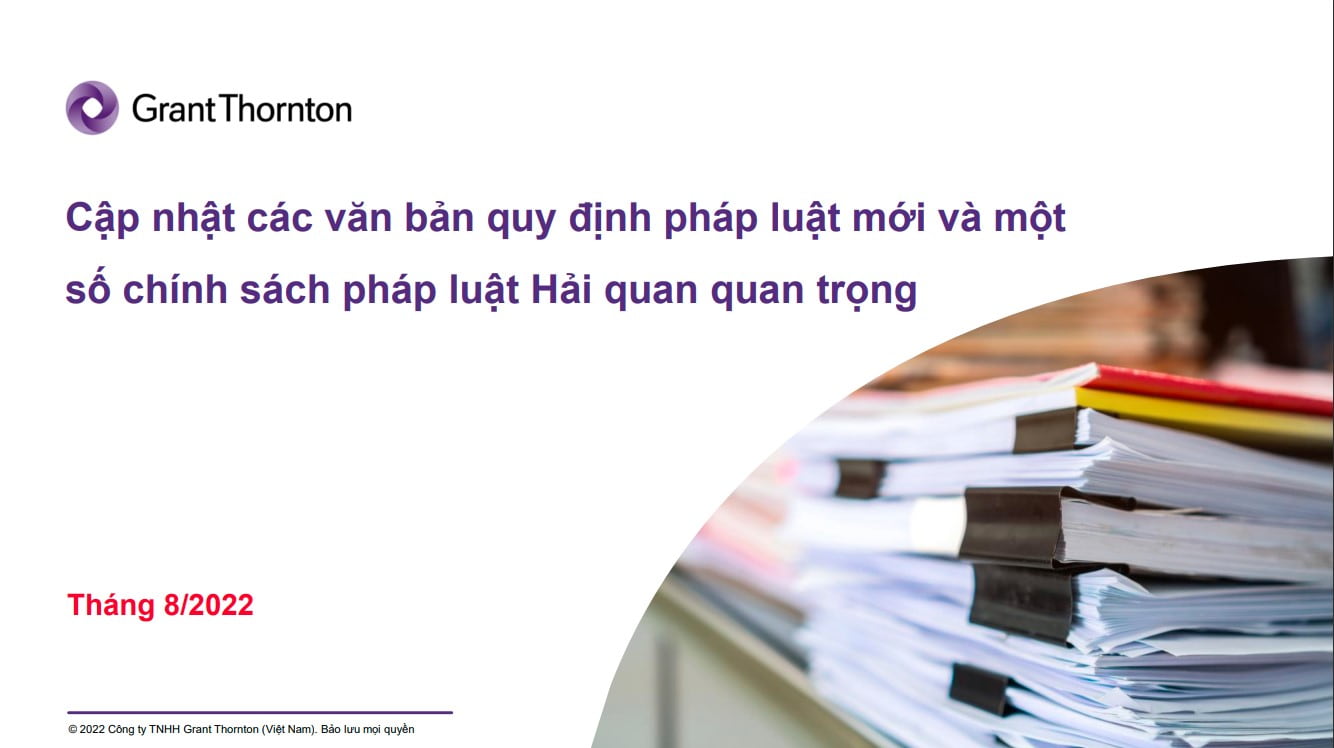-
International Financial Reporting Advisory Services
IFRS reporting advisory serivces of Grant Thornton are carried out by our dedicated team with expertise in IFRS implementation.
-
Audit Services
• Statutory audit • Review of financial statements and financial information • Agreed-upon procedures • FRAS services • Compilation of financial information • Reporting accountant • Cross-border audit • US GAAP audit
-
Audit Quality
We have various methods of monitoring our system of quality control and engagement quality, including real-time involvement of coaches and national office personnel on select audit engagements, reviews of issuer audit engagements prior to archiving by someone outside of the engagement team, and internal inspections of assurance engagements and the system of quality control.
-
Audit Approach
Audit Approach
-
Licensing services
Licensing services
-
International tax planning
Our extensive international network provides us with significant resources to meet all your expansion goals. We strive to develop commercially focused and tailored tax strategies to minimise tax exposures and maximise business efficiency.
-
Expatriate tax planning
We have a broad knowledge base and skills to assist you keep your personal income taxes to a legitimate and reasonable level, while remaining compliant with legislation. We can develop a personalised package for each key employee to take maximum advantage of the exemptions and incentives available.
-
Tax advisory
We will review the proposed business model and transactions and advise on tax implications and recommendations to optimize the tax opportunities under the local regulations and treaties which Vietnam entered into. Furthermore, we coordinate with our GT global tax team to provide a comprehensive tax advisory for the countries involved in the business model and transactions.
-
Tax compliance services
This service is designed to assist enterprises to cope with the statutory tax declaration requirements in line with the Vietnamese tax laws as well as the frequent changes and updates in tax laws.
-
Tax health check
Our Tax Health Check involves a high-level review of specific tax areas to highlight the key issues that need to be rectified in order to reduce tax risks. Through our extensive experience, we have identified key risk areas in which many enterprises are not fully compliant or often overlook potential tax planning opportunities. Our tax health check service represents a cost-effective method to proactively manage risks and reduce potential issues arising as a result of a tax inspection.
-
Transfer Pricing
Transfer pricing is a pervasive tax issue among multinational companies. In Vietnam, the tax authorities require special documentation to report related party transactions. Compliance with transfer pricing regulations is an important aspect of doing business effectively in Vietnam as failure to do so may result in significant penalties.
-
Tax due diligence
We conduct tax due diligence reviews of target companies to analyse their tax exposure and position in relation to acquisitions, mergers or consolidations. We are able to integrate this service with our Advisory Services department in order to offer a comprehensive, holistic due diligence review.
-
Customs and international trade
Our experienced professionals can help you manage customs issues more effectively through valuation planning and making use of available free trade agreements. We also assist Clients in optimising their customs procedures by making use of potential duty exemptions and efficient import-export structures. Risk mitigation activities include customs audit defense and compliance reviews.
-
M&A Transaction
We advise numerous foreign investors on efficient tax structures for their investments. Our experience allows you to consider all the options and set up a corporate structure that meets both operational and tax efficiency requirements. In short, the structure that is best for you.
-
Industrial Zones – Picking A Location For Your Business
Grant Thornton Vietnam’s one-stop services are designed to provide comprehensive support to both new and current investors who are planning to expand or restructure their business in Vietnam. Our professionals have established strong working relationships with landlords, property developers and authorities at various localities. With extensive experiences in liaison with the relevant agencies, we offer assistance including negotiation on land rental rates and efficient management of licensing process. Our customized and flexible solutions can bring benefits of cost efficient location, accelerate licensing process, and optimize tax opportunities while remaining in compliance with legislation.
-
Tax Audit Support
Tax audit support services provide comprehensive assistance to your business in Vietnam. Recent tax practices have shown the general tendency of launching routine tax audit on yearly basis. Tax authorities have been effectively using more sophisticated methods to identify target entities from across different industry sectors.
-
Business Risk Services
Business Risk Services
-
Transaction Advisory Services
Transaction Advisory Services
-
Valuation
Valuation
-
Business consulting services
Finance Management Advisory
-
Accounting services
Accounting services
-
Taxes compliance within outsourcing
Taxes compliance within outsourcing
-
Payroll, personal income tax and labor compliance
Payroll, personal income tax and labor compliance
-
Secondments/Loan staff services
Secondments/Loan staff services
-
Compilation of the financial and non-financial information
Compilation of the financial and non-financial information
-
Accounting systems review and improvement
Accounting systems review and improvement
-
Initial setting-up for accounting and taxes systems
Initial setting-up for accounting and taxes systems
-
Management accounting and analysis
Management accounting and analysis
-
Comprehensive ERP system solution
ERP software is a tool for business operations, production management, order processing and inventory in the business process. Today, ERP software for small and medium businesses has been greatly improved to help businesses manage their business better. The article below will answer all relevant information about what ERP software is and offer the most suitable ERP solution for businesses. Let's follow along!
-
Analyze Business Administration data
We believe in the value that data can bring to the success and development of every business. Our team helps design data architecture supported by tools, to support business governance and provide useful information to management.
-
Financial reporting compliance solution package
Putting financial issues at the heart, this service helps ensure that financial reports for customers comply with both the requirements of Vietnamese accounting regulations and standards (VAS) as well as reporting standards. international finance (IFRS).
-
Third-party ERP extensions
ERP is a long-term solution that requires long-term travel, not short-term. We understand that many businesses cannot deploy the entire ERP system at once due to many different reasons, instead businesses can deploy each part. Over time, these solutions can be expanded to accommodate improved business processes or can even link completely new processes across different departments.
-
Localize, deploy and rebuild the project
Quite a few ERP projects need to be implemented according to current Vietnamese requirements and regulations, but still comply with common international business requirements. These projects need some improvements and adjustments in the right direction.
-
Consulting on technology solutions
We support the selection and implementation of the most suitable solutions, ensuring business efficiency and performance. We will work closely with customers to plan, evaluate and implement the right technology investment strategies and solutions to meet the development needs of businesses.

-
Offshore company establishment service
Using the offshore company model will facilitate the owner in the process of transaction and expand overseas markets, take advantage of the tax policy with many incentives and protect the value of the family enterprise's assets.
-
Private Trust Advisory
The development of the economy with many modern financial instruments has brought many advantages and opportunities for the enterprises, but there are still certain potential risks in any type of business. So how to protect your asset value with an appropriate company structure while stay compliance with relevant regulations?
-
Our values
We have six CLEARR values that underpin our culture and are embedded in everything we do.
-
Learning & development
At Grant Thornton we believe learning and development opportunities help to unlock your potential for growth, allowing you to be at your best every day. And when you are at your best, we are the best at serving our clients
-
Global talent mobility
One of the biggest attractions of a career with Grant Thornton is the opportunity to work on cross-border projects all over the world.
-
Diversity
Diversity helps us meet the demands of a changing world. We value the fact that our people come from all walks of life and that this diversity of experience and perspective makes our organisation stronger as a result.
-
Contact us
Contact us
-
Available positions
Experienced hires
-
Available positions
Available positions
1. Circular 10/2022/TT-BCT amending and supplementing the Circular on the Rules of Origin under the ASEAN Trade in Goods Agreement
On 1 June 2022, the Ministry of Industry and Trade issued Circular 10/2022/TT-BCT amending and supplementing the implementation of the Rules of Origin under the ASEAN Trade in Goods Agreement. Accordingly, 03 appendices issued under Circular 19/2020/TT-BCT were abolished, Circular 10/2022/TT-BCT introduces 03 appendices to replace some articles of Circular 22/2016/TT-BCT including:
• Appendix I – Issuance and verification of C/O
• Appendix II – Specimen of C/O Form D
• Appendix III – Guidelines for completing C/O Form
Although the Circular takes effect from 16 July 2022, enterprises should notice that C/O Form D as prescribed in Appendix II, Circular 19/2020/TT-BTC shall be issued until the end of 31 October 2022. From 1 November 2022, enterprises are required to use appropriate C/O Form to ensure the application of C/O Form being accepted by Customs Authorities in prevention of abrogation of preferences.
2. Circular 31/2022/TT-BCT promulgating of Vietnam's Nomenclature of Exports and Imports
An update on Vietnam’s Nomenclature of Exports and Imports to be more appropriate to the current situation, on 8 June 2022, the Ministry of Finance issued Circular 31/2022/TT-BTC to replace Circular 65/2017/TT-BTC and Circular 09/2019/TT-BTC on Vietnam’s Nomenclature of Exports and Imports. Accordingly, Vietnam’s Nomenclature of Exports and Imports issued together with this Circular includes 02 appendices:
• Appendix I – Vietnam’s Nomenclature of Exports and Imports.
• Appendix II – Six (6) general rules explaining the classification of goods according to Vietnam’s Nomenclature of Exports and Imports based on the Harmonization System of description and encryption of goods of the World Customs Organization.
Generally, Circular 31/2022 specifically mentioned the name and description of goods in the nomenclature and comes into force from 1 December 2022. In the next 4 months before applying of Vietnam’s Nomenclature of Exports and Imports according to Circular 31/2022, enterprises are encouraged to research in advance to apply correct classification of goods pursuant to regulation in prevention of applying incorrect Vietnam’s Nomenclature of Exports and Imports.
3. Official Letter 2054/TCHQ-GSQL on usage of e-invoices for export goods
Responding to the inquiry of taxpayers regarding the issuance of e-invoices for exported goods/ services when enterprises implement e-invoices according to Decree 123/2020/NĐ-CP. On 3 June 2022, the General Department of Customs issued Official Letter 2054/TCHQ-GSQL guiding enterprises on the use of commercial invoices and electronic VAT invoices for exported goods/services, details as follows:
• For exporting goods, enterprises shall issue both commercial invoices in accordance with international trading practice (exported goods) and electronic VAT invoices (exported goods and services) to ensure the compliance with tax customs laws of Vietnam.
• Commercial invoices shall be issued before customs clearance, while the related electronic VAT invoices are issued when the exporter completes customs declaration procedures.
Therefore, to ensure compliance with tax laws as well as international trade practices/customs declaration regulations, enterprises need to issue both types of invoices as prescribed. Enterprises are recommended to make a reconciliation between commercial invoices and electronic VAT invoices, not only to ensure completeness and satisfaction of export dossiers but also to serve declaration requirements of VAT and corresponding tax refund.
4. Official letter 2426/TCHQ-TXNK providing guidance on classification of product code (HS code) for non-woven fabrics
On 21 June 2022, the General Department of Customs issued Official Letter 2426/TQHQ-TXNK of guiding the declaration of HS code for non-woven fabrics. In this regard, the Official Letter has some points as follows:
• Taxpayers shall base on technical analysis documents, manufacturer’s composition analysis, actual goods… in order to declare information of goods such as: whether non-woven fabrics are made from artificial filament or staple fiber or other fibers or yarns, whether they are coated or pressed, color, weight, size… and compare with the Description on the list of Vietnamese imports and exports to declare the appropriate code.
• For any goods which need to be identified with HS code, enterprises shall collect the results of the analysis of the compositions of goods/materials and compare them with the list of exported and imported goods (from 1 December 2022, Circular 31/2022/TT-BTC shall be applied) to avoid errors affecting import tax rates.
Please study the newly issued regulations and review the internal compliance procedures in order to comply with the regulations on customs tax as well as reduce errors in the process of filing and preparing documents that could lead to additional tax obligations or administrative penalty. Please contact the experts of Grant Thornton Vietnam for in-depth advice if you have any inquiries during the implementation of tax and customs compliance.










